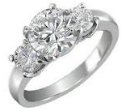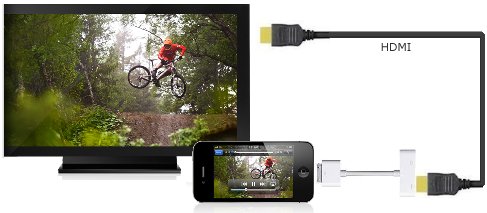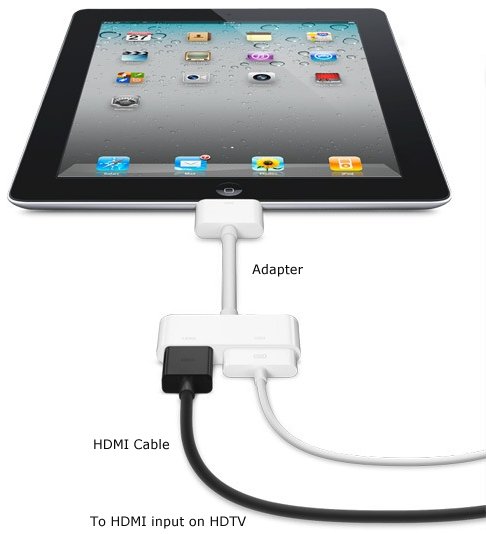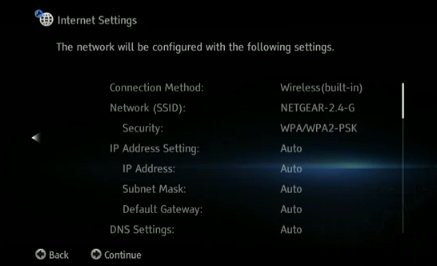Internet, IP, DNS: How the Internet Works
o What are all those numbers and why do I need to specify them for my internet device?
How to setup broadband wireless internet at home
• Look for HDTV CABLES
• Internet-Ready HDTV
New TV sets from LG, Sony, Vizio, Samsung and others link internet to HDTV.
• Internet TV Media Players compared
ROKU, Sony, WD, Boxee box, Apple, Netflix, Hulu
• XBOX 360 Kinect motion sensing device
Full body interaction with Xbox 360 games
• XBOX LIVE internet setup
Xbox LIVE setup, starter kit
• Kindle Fire - new for 2012 e-book reader, Wi-Fi, and more from Amazon
• 4K TV - four times the resolution of 1080p
• All about Surge Protectors - Save your electronic devices from power spikes
• How to setup wireless USB adapter for a desktop PC
• Blu-ray Players with Internet capability.
Get NetFlix, YouTube, BD Live and more. Wireless connectivity to your broadband service.
• Bluray Disc and HDTV
• How much does it cost to run my TV?
º What you need to know about jewelry before shopping
º How to hookup TV or laptop to powered speakers
• How to spot fake silver coins or bars
• How to tell if your Diamond is real

• Hook up diagram for old portable TV sets using a TV converter box
• DTV converter boxes for 2009, the switch to Digital TV
• DTV converter boxes reviewed
• What is HDMI?
• What is USB?
• VCR SETUP
• Nintendo Wii hookup diagrams
• Camcorder Video Capture - WinXP to Vista
• How to restore stereo mix in Vista and Windows 7
• DVD media hardware software
• HDTV BUYING GUIDE
• Apple iPhone iPad iPod - How to hookup to TV
• Converter box and VCR to TV hookup
• DVD player to TV hookup
• Digital Cable TV box to TV hookup
• RF Modulator for DVD hookup to TV
Apple iPod Touch
Apple iPod Touch, iPhone4, iPad2
How to connect iPod Touch 4 to HDTV

Put your slides, movies, photos, and everything else that fills your iPad 2 screen on an even bigger screen. Apple Digital AV Adapter also supports HD video out for iPad, iPhone 4 and iPod touch (4th generation). Apple Digital AV Adapter mirrors exactly what you see on iPad 2. If you have an iPad, an iPhone 4, or a fourth-generation iPod touch, Apple’s Digital AV Adapter finally makes it possible to output HD video (with audio) from your iOS device to your HDTV.
The Apple Digital AV Adapter mirrors exactly what you see on iPad 2 so that everyone in the room can enjoy it on your widescreen TV, video projection screen, or other HDMI-compatible display.
The Apple Digital AV Adapter also supports video out for iPad, iPhone 4, or iPod touch (4th generation). The adapter itself has two ports, one HDMI female port and one standard female iPod connector port. This permits you to power/charge the iPad or iPhone while simultaneously outputting video and audio.
Connect the Apple Digital AV Adapter to your iPad, iPad 2, iPhone 4, iPhone 4S or iPod touch (4th generation) via the 30-pin dock connector and to your HDMI-compatible display using an HDMI cable (sold separately).
A second 30-pin connector built into the AV adapter lets you charge and sync your device while it’s connected to your HDMI-compatible display.

For hookup to standard TV, use the Apple composite AV adapter
- Compatibility: iPod nano 3G, 4G, 5G; iPod classic 4G, 5G, 5.5G, 6G; iPod touch 1G, 2G, 3G, 4G; iPhone, iPhone 3G/3GS, iPhone 4; iPad
- Enjoy slideshows or videos from your iPhone or video-enabled iPod on your TV or other video devices
- AV cable connects to iPod universal dock or directly to your iPod/iPhone
- Composite AV connectors: analog audio (red/white) and video (yellow)
- Also includes USB connector for plugging into power sources
Columbia ISA - Empowering consumers thru information.
Contact: columbiaisa@yahoo.com
Xbox 360 Live Points Card
INTERNET SETUP EXPLAINED -
IP, DNS, How the Internet Works

Setup Screen for Internet Service on a typical device. Notice AUTO is filled in but if a MANUAL setup is needed, you need to know what addresses to enter.
When you setup your device, such as a Blu-ray player, to access the internet, you may need to do a custom or manual setup because the AUTO setup did not work for one reason or another. The IP address setting usually requires four IP addresses, IP address, subnet mask, default gateway and DNS. What do these mean?
The IP address means Internet Protocol address and is a number. Every device communicating over the internet needs to have a unique address so information can be routed to the proper destination. When you specify AUTO, this IP address is specified for you. The internet works because the hardware and software use a standard of communication, or protocols, for transmission of data.
The IP address needs to be a number large enough to represent all the possible destinations on the internet when communicating. How many devices are on the internet talking to each other? The IP address for your device is used to get data to you from other internet services you want to use like your bank or a content provider like Netflix or Amazon. The IP address, currently, for internet devices is a number in the form computers can use (binary) 32 bits long. Humans do better by using this number in the form of a decimal. So this is how the number is entered on setup screens.
Every computer or device that communicates over the Internet is assigned an IP address that uniquely identifies the device and distinguishes it from other computers on the Internet. An IP address consists of 32 bits, often shown as 4 octets of numbers from 0-255 represented in decimal form instead of binary form. For example, the IP address: 168.212.224.1 in binary form is 10101000.11010100.11100000.00000001.
If your Internet Service Provider (ISP) uses static IP addresses, you may need to fill in a specific IP address for the entries above. If your ISP allows DHCP or dynamic IP addresses, then IP addresses can be auto-filled for you and you never need to worry about them.
Running out of IP addresses:
IPv4 (version 4) uses 32 bit addresses which limits addresses to a little over 4 billion. Several methods of address utilization have been introduced to help solve the limits but more and more devices are being used.
To solve the shortage of IPv4 addresses, the IPv6 (128-bit) address scheme was introduced in 1993 and has seen deployment since 2006.
DNS or Name Server
The DNS entry specifies a Domain Name Server or System which you can think of as the internet's telephone book or GPS. Humans do better using www.fcc.gov for example, to visit a website. This is great for humans but it is not how computers reach the proper destination on the internet. The domain name system translates your human web address to the proper IP address so you get connected to the proper destination on the internet. If you knew the IP address of every destination website you wanted to go to on the internet, you could bypass the DNS server and just type the IP address into your web browser. But this is hard to do for humans. It is much easier to read words or initials than numbers. In addition, IP addresses can change, making this more difficult to keep up with. This is why domain name servers exist. There are many DNS servers on the internet to map addresses, so how does your device know which server to use? When you connect to your home network or Internet Service Provider, the router or modem that assigns your IP address also sends network definitions such as the DNS server IP address, or you can assign the IP address yourself if you know what the address should be. Your provider often can tell you this information if required.
DEFAULT GATEWAY
The default gateway connects a local network, such as your home network, to the Internet.
On home networks with a broadband router to share the Internet connection, the home router serves as the default gateway. This device has an IP address. On home networks without a router, such as for residences with dialup Internet access, a router at the Internet Service Provider serves as the default gateway. The gateway provides a path from one network (yours) to another network. All devices on your network go through your router to the internet.
SUBNET MASK
Like IP addresses, a subnet mask contains four bytes (32 bits) and is often written using the same "dotted-decimal" notation. For example, a very common subnet mask in its binary representation is
11111111 11111111 11111111 00000000 or 255.255.255.0
Applying the subnet mask to an IP address splits the address into two parts, an "extended network address" and a host address. Subnet Mask is made by setting network bits to all "1"s and setting host bits to all "0"s. Within a given network, two host addresses are reserved for special purpose. The "0" address is assigned a network address and "255" is assigned to a broadcast address, and they cannot be assigned to a host. So the above mask gives you up to 254 hosts.
o Setup your Blu-ray player on your home network
• How to buy a wireless router
• Satellite TV home installation guide
• DVR - Digital Video Recorder
• DVD Recorder Buying Guide
• HDTV Buying Guide
• How to hook up a cable TV box
• How to hook up a SA4250HDC digital cable TV box
• How to ground your coax cable and TV antenna - Lightning Protection
• Broadcast TV reception
• Insignia ns-dxa1 - TV converter box for digital TV on your old analog TV set
• Surround Sound
• Switch boxes video audio RCA phono and more
• Audio Video selector switches including Toslink
• All About HDMI - HDMI Cables
• SiteMap
AUDIO - VIDEO CABLE TYPES and JACKS
Columbia ISA
Empowering consumers thru information.